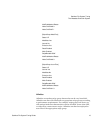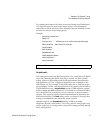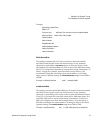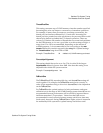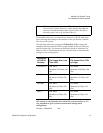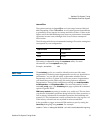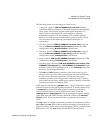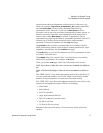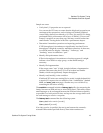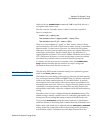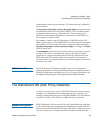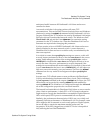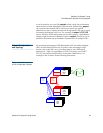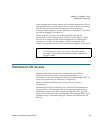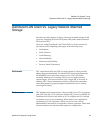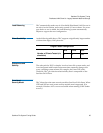StorNext File System Tuning
The Metadata Controller System
StorNext File System Tuning Guide 18
Sample use cases:
• Verify that I/O properties are as expected.
You can use the VFS trace to ensure that the displayed properties are
consistent with expectations, such as being well formed; buffered
versus DMA; shared/non-shared; or I/O size. If a small I/O is being
performed DMA, performance will be poor. If DMA I/O is not well
formed, it requires an extra data copy and may even be broken into
small chunks. Zeroing holes in files has a performance impact.
• Determine if metadata operations are impacting performance.
If VFS throughput is inconsistent or significantly less than Device
throughput, it might be caused by metadata operations. In that case,
it would be useful to display “fsmtoken,” “fsmvnops,” and
“fsmdmig” traces in addition to “perf.”
• Identify disk performance issues.
If Device throughput is inconsistent or less than expected, it might
indicate a slow disk in a stripe group, or that RAID tuning is
necessary.
• Identify file fragmentation.
If the extent count “exts” is high, it might indicate a fragmentation
problem.This causes the device I/Os to be broken into smaller
chunks, which can significantly impact throughput.
• Identify read/modify/write condition.
If buffered VFS writes are causing Device reads, it might be beneficial
to match I/O request size to a multiple of the “cachebufsize” (default
64KB; see
mount_cvfs man page). Another way to avoid this is by
truncating the file before writing.
The cvadmin command includes a latency-test utility for measuring the
latency between an FSM and one or more SNFS clients. This utility causes
small messages to be exchanged between the FSM and clients as quickly
as possible for a brief period of time, and reports the average time it took
for each message to receive a response.
The latency-test command has the following syntax:
latency-test index-number [seconds]
latency-test all [seconds]
If an index-number is specified, the test is run between the currently-
selected FSM and the specified client. (Client index numbers are



